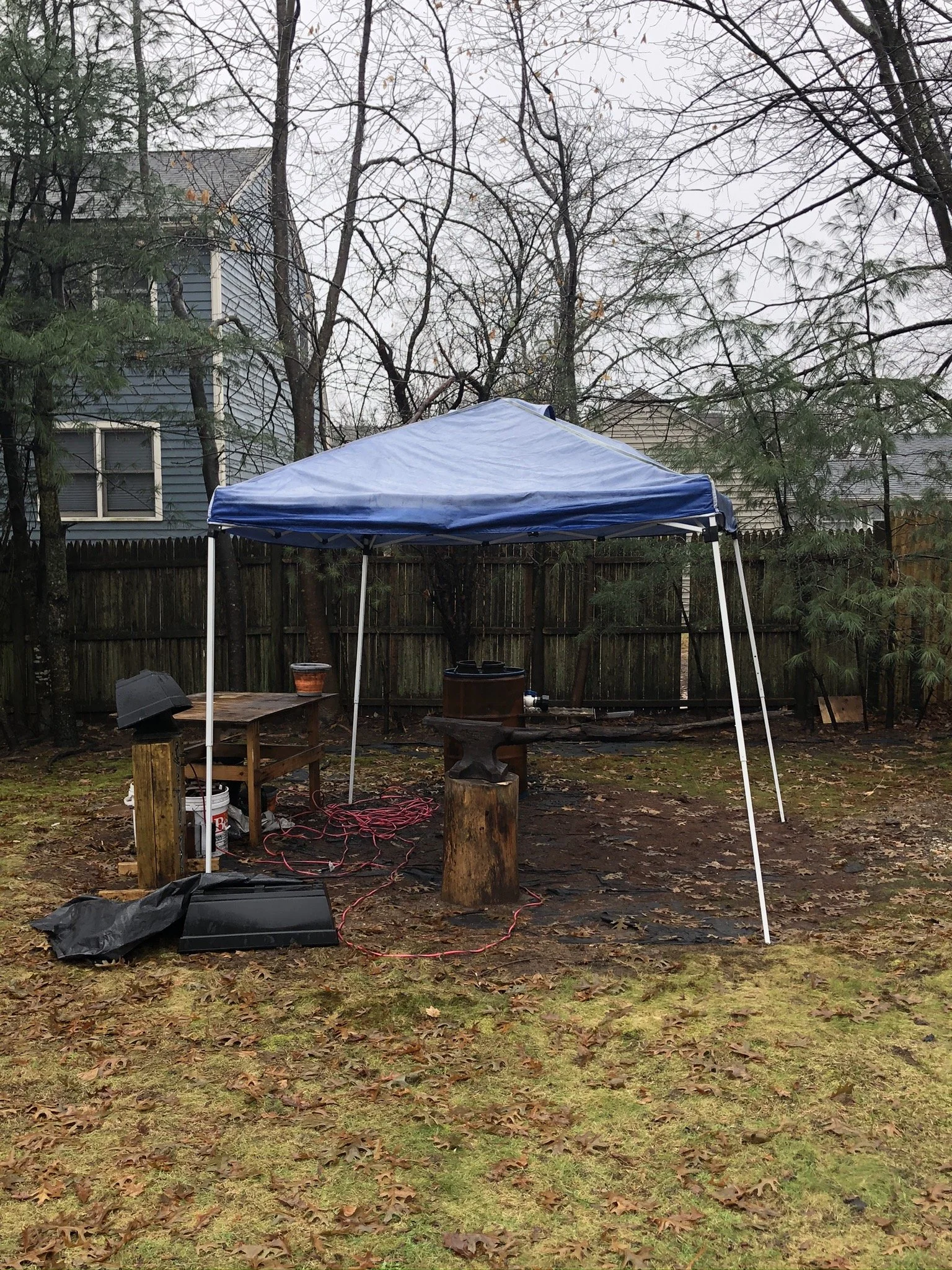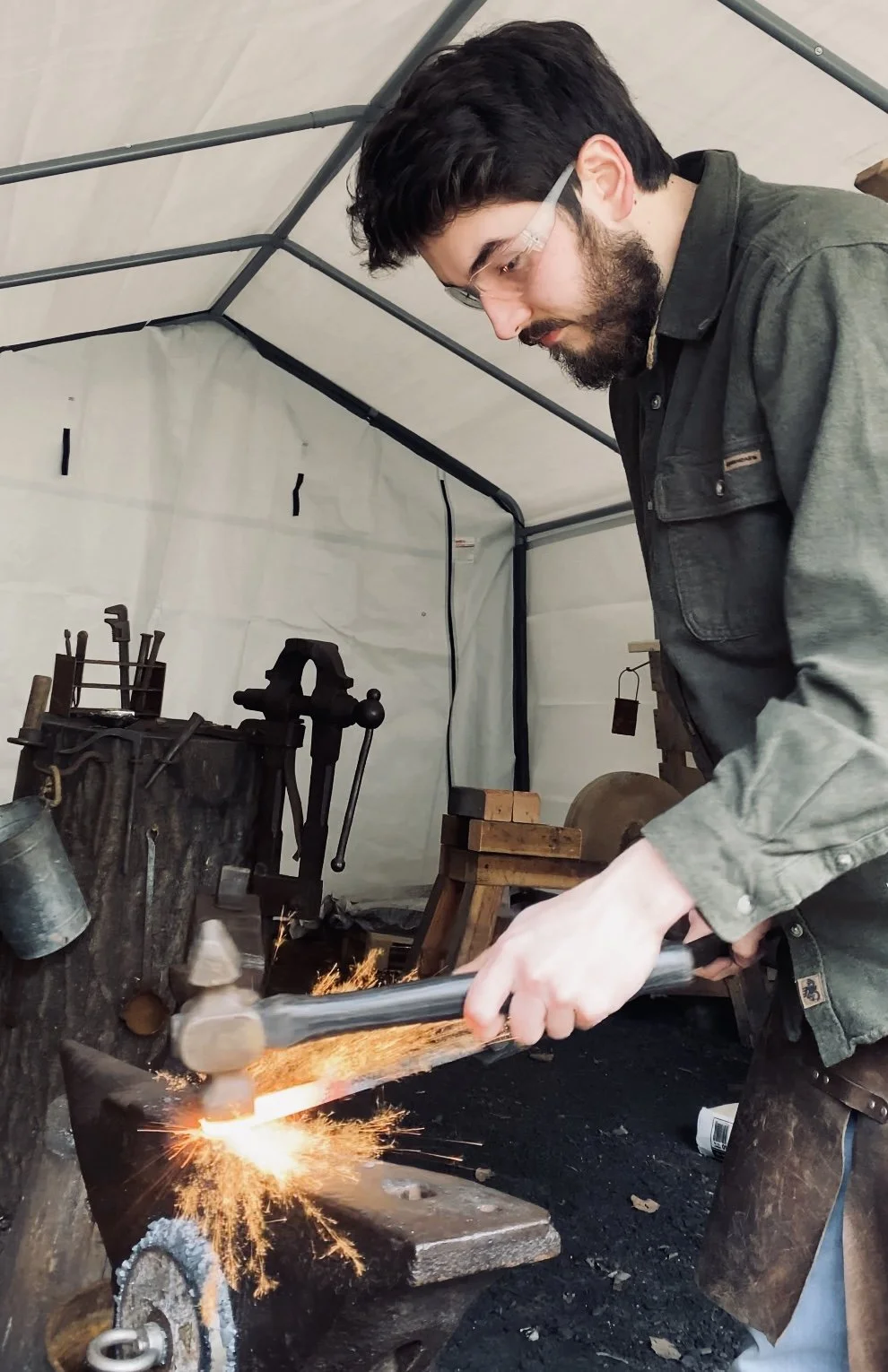How it Started
I began blacksmithing in early 2019 (age 14) after developing an interest in bushcraft and outdoor living the year before. While watching YouTube, I came across a craftsman using a drawknife, a woodworking hand tool. It was a tool I wanted but could not justify buying at such a young age ($30 is a lot of money at 14!), so I set out to make one myself. That decision drove me to study blacksmithing, build a crude forge from scrap materials, and heat steel for the very first time. The experience of firing up that first forge was unforgettable.
A few months later, I took a beginner’s class at a Rhode Island open-air museum, forging a simple coathook with antique tools in a late nineteenth century blacksmith shop. That day deepened my fascination with historical equipment and traditional techniques, an influence that continues to guide my work today. Since then, I have collected antique tools and focused on preserving the craft through their use.
My first commissions came when family friends showed interest in my work. At my father’s suggestion, I designed and forged a fire poker to replace his broken one. To my surprise, others wanted them too. That small success marked the beginning of my journey as a maker.
Today, I consider myself an artist blacksmith, creating contemporary ironwork rooted in tradition. Each piece is handcrafted to be functional, decorative, and made to endure for generations.
My first forge setup (Circa March 2019)
Nick Riolo (that’s me!) forging a taper on a bar of wrought iron
A Brief History of my Craft
Origins of Blacksmithing
Ironwork began in Northern Africa, with early iron artifacts (beads made of meteor, etc…) dating as far back as 3000 BCE. Around 1500 BCE, the Hittites (modern-day Turkey) developed smelting methods that allowed iron to be worked more systematically. Early pieces were crude, but this marked the start of a craft that would shape civilizations.
Medieval Evolution
By the medieval period, blacksmiths were vital members of their communities, producing tools, hardware, weapons, and armor. As their knowledge grew, they learned how to harden and temper steel, creating stronger and more reliable items. Much of what we recognize as traditional blacksmithing took root in this era.
Industrial Decline and Adaptation
The Industrial Revolution in the 18th and 19th centuries reduced the need for traditional smiths as factories mass-produced goods. Many blacksmiths shifted roles, becoming farriers, equipment repairers, or early mechanics (as the shops were already designed around hosting horse-drawn carts and carriages). By the 20th century, blacksmithing as an everyday role had largely disappeared.
20th Century and Beyond
Though in decline for decades, blacksmithing saw a revival in the late 20th century as both an art form and a heritage craft. Today, blacksmiths create functional and decorative pieces that honor tradition while embracing creativity, keeping the spirit of the trade alive in modern communities. The numbers continue to grow, with tens of thousands of blacksmiths present in the US alone.
What Does a Blacksmith Do?
At its heart, blacksmithing is the process of heating iron or steel (an iron alloy) until it can be shaped with hammer and anvil. At high temperatures, the metal becomes malleable, much like clay, and can be moved just the same. From tools and weapons to contemporary art, the essence of blacksmithing remains the transformation of raw metal into something both useful and beautiful.
Nick adjusting the petals on an iron rose



